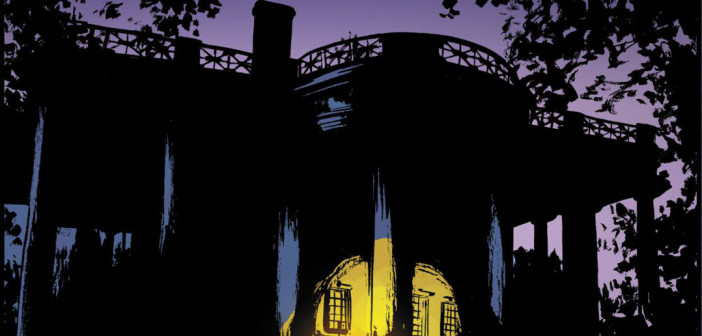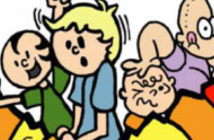It’s a strange television show for an eight-year-old to fall into, but I remember the first scene I ever saw in Dark Shadows vividly: Barnabas and Roger Collins were wandering around the dusty and ruined halls of Collinwood’s abandoned west wing. (Why is it always the west wing in gothic storytelling?) What they were looking for or saying during the expedition I don’t recall, but I’m sure it’s inconsequential in the overall arc of the show, as the west wing was always a fixture of mystery and suspense.
That’s what Dark Shadows is to me — one great happy memory. It’s one of my favorite shows to this day: I own several volumes of it on DVD, and was even given as a graduation gift from my parents a replica of Barnabas Collin’s wolf’s head cane. I still have and treasure it. But it’s not so much a memory anymore, a show lost in time save for occasional reruns on the SyFy Channel, as it was given a brief jump start in the media when the Tim Burton adaptation starring Johnny Depp, Eva Green, and Michelle Pfeiffer hit theaters.
I suspect that brief return from the dead is what prompted Dynamite Entertainment to green light a trip back to the chilly, damp nights in Maine’s fictional seafront town of Collinsport. But the Dark Shadows stories Dynamite is publishing return to the core atmosphere of the soap opera of the 1960s and 1970s instead of the recent camp Tim Burton felt the need to direct.
How successful is writer Stuart Manning at reviving Dark Shadows in the comic-book medium? It’s hard to tell: he’s working with all of the right elements and understands what flavored the show’s original spirit. With the moody and cryptic illustrations of Aaron Campbell (who flawlessly captures the visual appeal of Dark Shadows), I still question if Manning is reviving and continuing a great story, or recycling material that’s already been covered by the show decades ago.
His story opens with the vampire Barnabas Collins still presiding over his descendants as the family’s grim guardian angel, and Dr. Julia Hoffman is still tinkering away at trying to cure the magical curse of undeath with hard-nosed science (a plot device I always found stupid) — and we’re left to wonder if she’s doing it for science or some secret love for Barnabas.
There’s Elizabeth, who is trying to hold the family together by day; her daughter Carolyn, who has developed a melodramatic drinking problem at the town’s sole bar called the Blue Whale; Roger, who is a master of charismatic brooding; and David, the weirdo kid you’ll feel tempted to smack around guilt-free. Making a cameo is Quentin, who is more like Barnabas than he lets on… but I’ll leave it at that.
Because this is such a brief book — it only collects four issues instead of the standard six — I can’t mention much without spoiling the entire plot, but I will say an old nemesis returns once again to torment Barnabas.
But why? That’s the question I kept asking myself: Manning paces his story well enough, and his work with Campbell does channel Dark Shadows successfully in a fundamental sense. But I missed any true experimentation with the storytelling: why not take some risks and push Dark Shadows past the legacy it has already set for itself? Perhaps Manning will stray out of his comfort zone for future issues, and then we will have something worth a deeper conversation.




